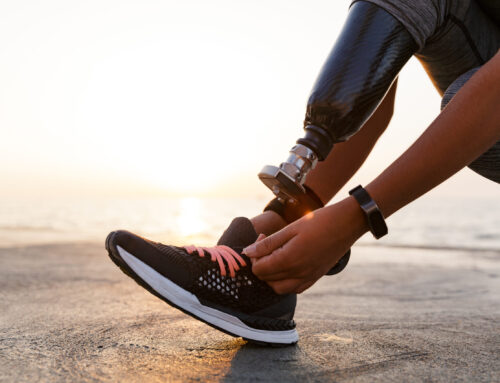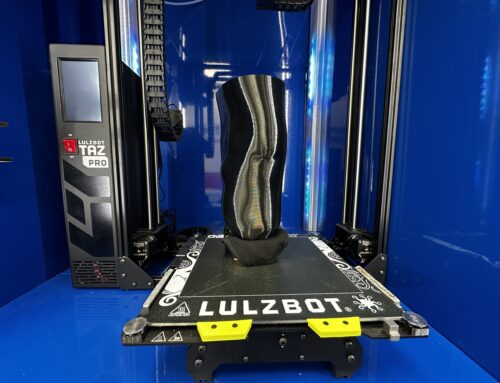Prosthesis: An Overview of Types, Benefits, and Challenges
Prosthesis refers to an artificial body part that replaces a missing or damaged one, allowing the individual to perform various activities of daily living. Prosthetic devices are designed to improve the quality of life of those who have lost their limbs or body parts due to accidents, congenital conditions, or illnesses such as diabetes. In this article, we will discuss the various types of prosthetic devices available, their benefits, and challenges associated with their use.
Introduction
Losing a limb can be a traumatic experience, and adjusting to life with a prosthetic device can be challenging. However, prosthetic devices have come a long way in recent years, offering individuals the ability to regain much of their lost functionality and independence. In this article, we will discuss the various types of prosthetic devices available, their benefits, and challenges associated with their use.
Types of Prosthetic Devices
Prosthetic devices can be categorized based on the body part they are designed to replace. The three main categories of prosthetic devices are upper limb, lower limb, and craniofacial prostheses.
Upper Limb Prostheses
Upper limb prostheses are designed to replace missing or damaged arms, hands, or fingers. There are two main types of upper limb prostheses: body-powered and myoelectric.
Body-powered prostheses use cables, harnesses, and springs to enable the user to control the device with their remaining limb or body movements. Myoelectric prostheses, on the other hand, use electrical signals from the user’s remaining muscles to control the device.
Lower Limb Prostheses
Lower limb prostheses are designed to replace missing or damaged legs, feet, or toes. There are several types of lower limb prostheses, including:
- Transtibial prostheses: replace the lower leg, below the knee
- Transfemoral prostheses: replace the entire leg, above the knee
- Knee disarticulation prostheses: replace the knee joint
- Symes prostheses: replace the foot and ankle
Craniofacial Prostheses
Craniofacial prostheses are designed to replace missing or damaged parts of the head and face, including the ears, nose, and eyes. These prostheses are custom-made to fit the individual’s unique facial structure and can be attached with magnets, clips, or adhesives.
Benefits of Prosthetic Devices
Prosthetic devices offer several benefits to individuals who have lost a limb or body part. Some of these benefits include:
Restored Functionality
Prosthetic devices can restore much of the lost functionality of a missing limb, allowing the individual to perform activities of daily living such as eating, dressing, and grooming.
Improved Quality of Life
Prosthetic devices can improve the individual’s quality of life by providing them with greater mobility and independence, allowing them to participate in activities they enjoy.
Challenges of Prosthetic Devices
Despite their many benefits, prosthetic devices also come with several challenges. Some of these challenges include:
Limited Range of Motion
Prosthetic devices may have a limited range of motion compared to natural limbs, which can make it difficult to perform certain activities.
Poor Fit
Prosthetic devices must fit properly to function effectively. Poorly fitting prostheses can cause discomfort, skin irritation, and other complications.
High Cost
Prosthetic devices can be expensive, and not all insurance plans cover the full cost of the device. This can make it difficult for individuals who cannot afford the cost to obtain the prosthetic they need.
Advances in Prosthetic Technology
Advances in technology have led to significant improvements in prosthetic devices in recent years. Some of the most significant advances include:
Myoelectric Prostheses
Myoelectric prostheses use electrical signals from the user’s remaining muscles to control the device. This technology has led to more natural and intuitive control of prosthetic devices.
3D Printing
3D printing technology has made it possible to produce prosthetic devices that are custom-fit to the individual’s unique anatomy. This has led to more comfortable and effective prosthetic devices.
Brain-Computer Interfaces
Brain-computer interfaces (BCIs) allow individuals to control their prosthetic devices using their thoughts. This technology has the potential to revolutionize prosthetic devices, offering greater functionality and control.
Prosthetic Care and Maintenance
Prosthetic devices require regular care and maintenance to function effectively. This includes proper cleaning, lubrication, and adjustment of the device. It is important for individuals with prosthetic devices to work closely with their healthcare providers to ensure proper care and maintenance of their devices.
Conclusion
Prosthetic devices offer individuals who have lost a limb or body part the ability to regain much of their lost functionality and independence. While prosthetic devices come with their own set of challenges, advances in technology continue to improve the functionality and comfort of these devices. It is important for individuals with prosthetic devices to work closely with their healthcare providers to ensure proper care and maintenance of their devices.
FAQs
- How long does it take to adjust to a prosthetic device?
Adjusting to a prosthetic device can take several weeks or months, depending on the individual and the type of device.
- Can children use prosthetic devices?
Yes, children can use prosthetic devices. There are many different types of prosthetic devices available that are designed specifically for children.
- Can I swim with a prosthetic device?
Some prosthetic devices are designed to be waterproof and can be used while swimming. However, it is important to check with the manufacturer or healthcare provider before using the device in water.
- How often do prosthetic devices need to be replaced?
The lifespan of a prosthetic device varies depending on the type of device and the individual’s level of activity. In general, prosthetic devices need to be replaced every 3-5 years.
- Are prosthetic devices covered by insurance?
Many insurance plans cover the cost of prosthetic devices. However, coverage varies depending on the plan and the type of device. It is important to check with your insurance provider to determine what is covered.
- “Prosthetic Limbs: How They Work.” WebMD, 2022, https://www.webmd.com/healthy-aging/prosthetic-limbs-how-they-work.
- “The Advantages and Disadvantages of Prosthetics.” Orthopaedics & Sports Medicine of Ohio, 2022, https://osmohio.com/the-advantages-and-disadvantages-of-prosthetics/.
- “Prosthetics Market Size, Share & Trends Analysis Report By Product (Upper Extremity, Lower Extremity, Liners, Sockets), By Technology (Conventional, Electric Powered, Hybrid), By Region, And Segment Forecasts, 2021 – 2028.” Grand View Research, 2021, https://www.grandviewresearch.com/industry-analysis/prosthetics-market.
- “Prosthetics: Types, Uses, and Risks.” Healthline, 2022, https://www.healthline.com/health/prosthetics.
- “5 Advances in Prosthetic Technology That Will Change Lives.” Popular Science, 2018, https://www.popsci.com/prosthetic-technology-advancements/.
OPENING HOURS
| Mon – Fri | 8:00 – 4:30 |
| Saturday | CLOSED |
| Sunday | CLOSED |






